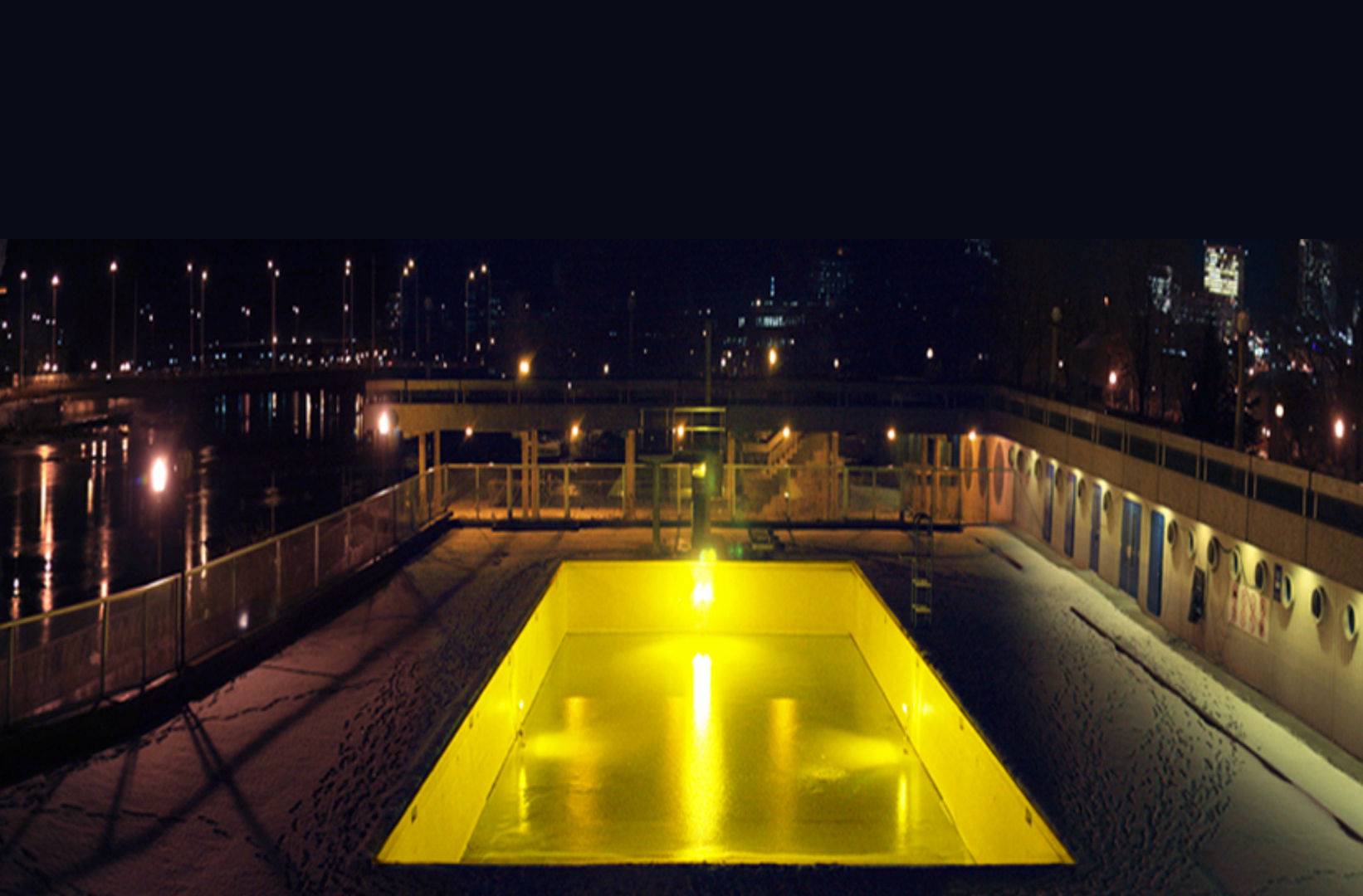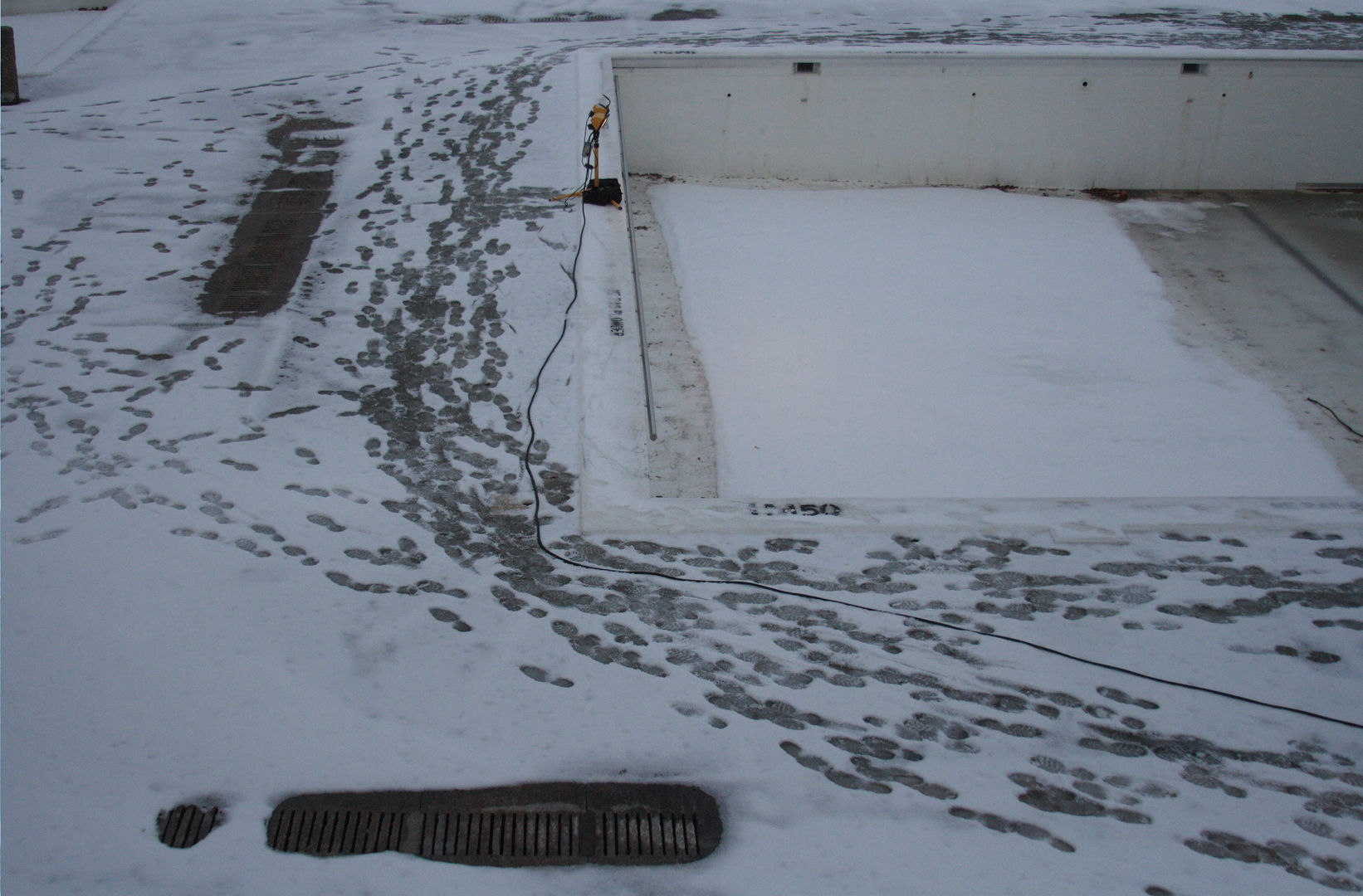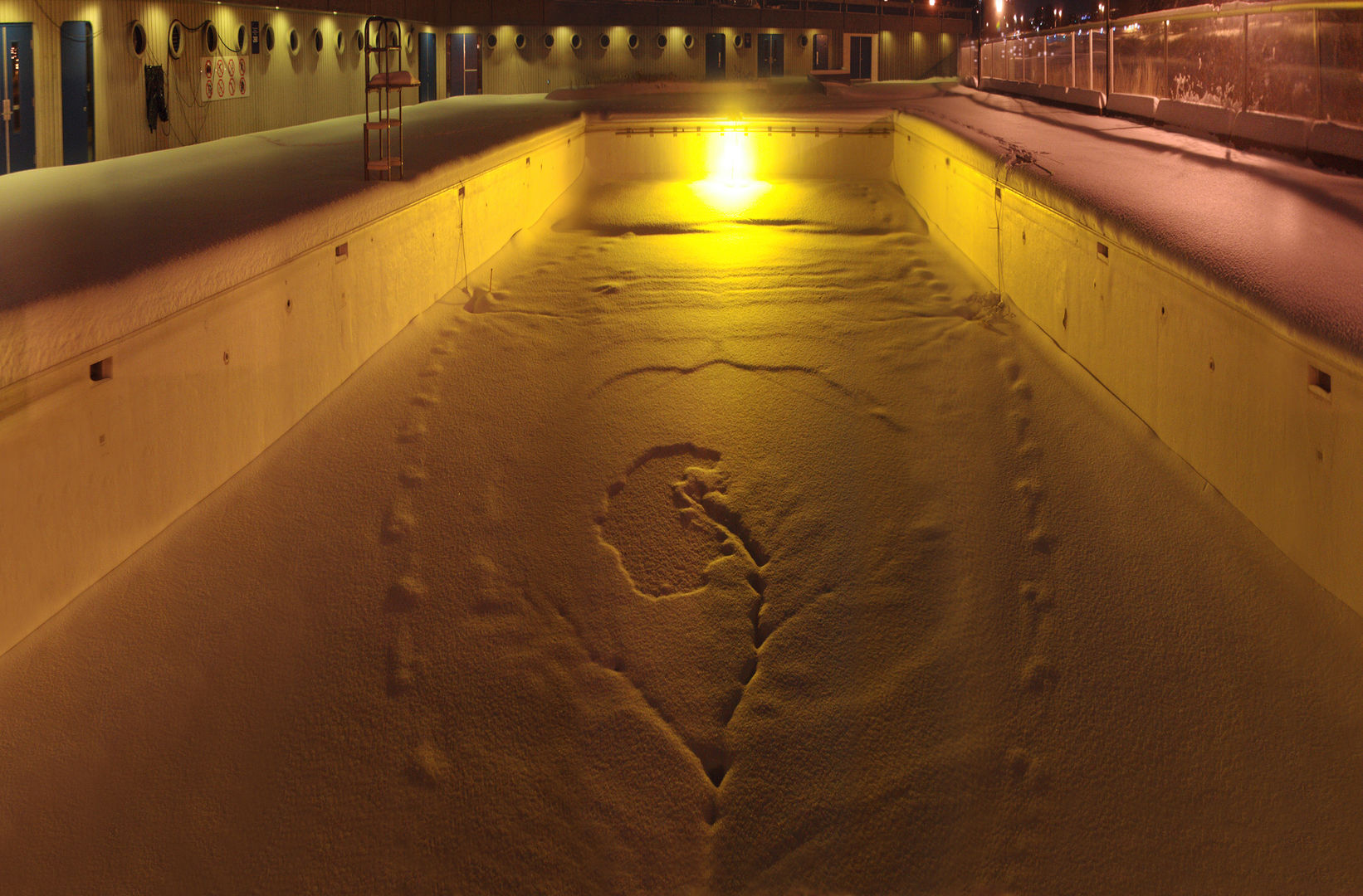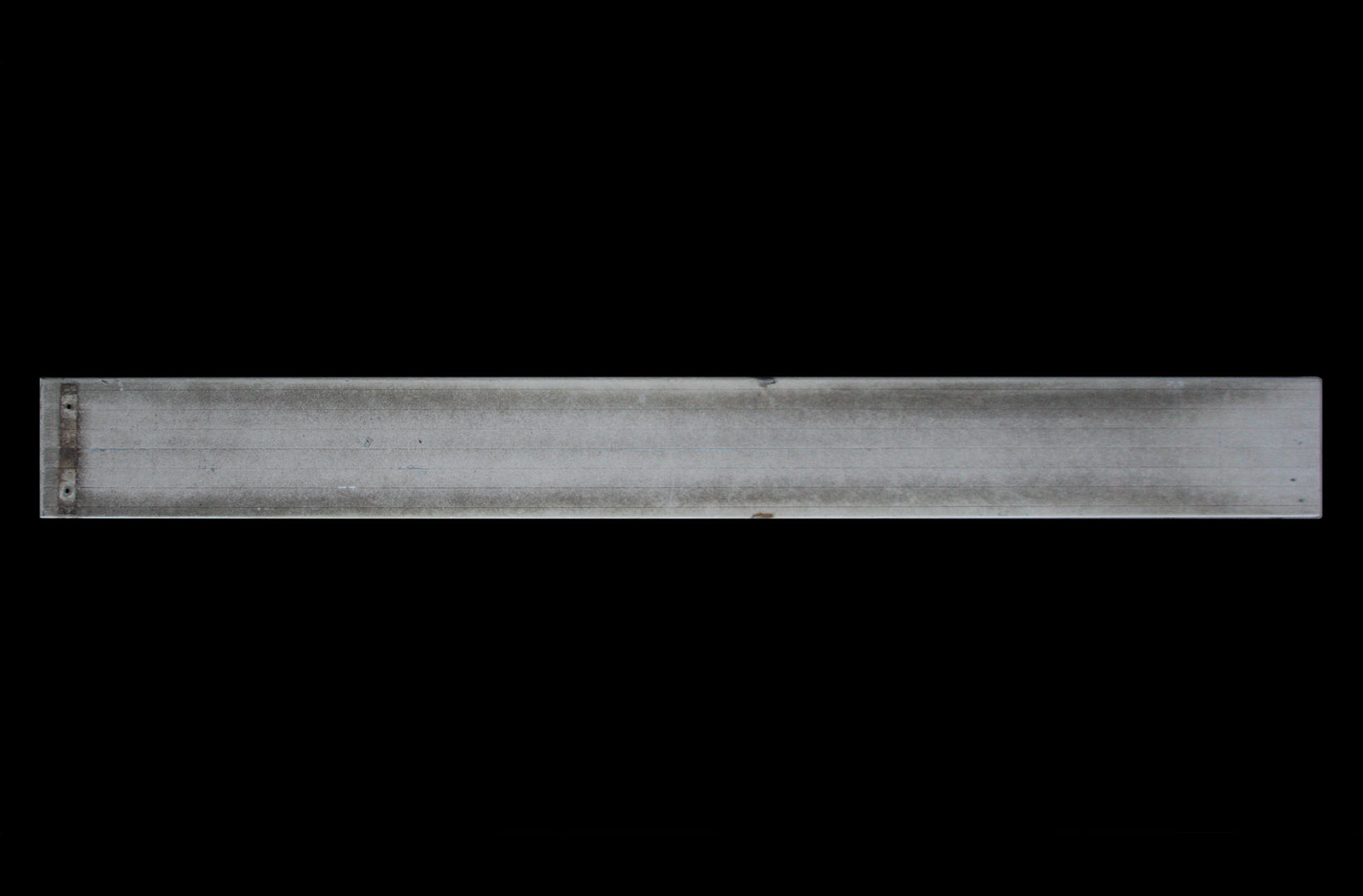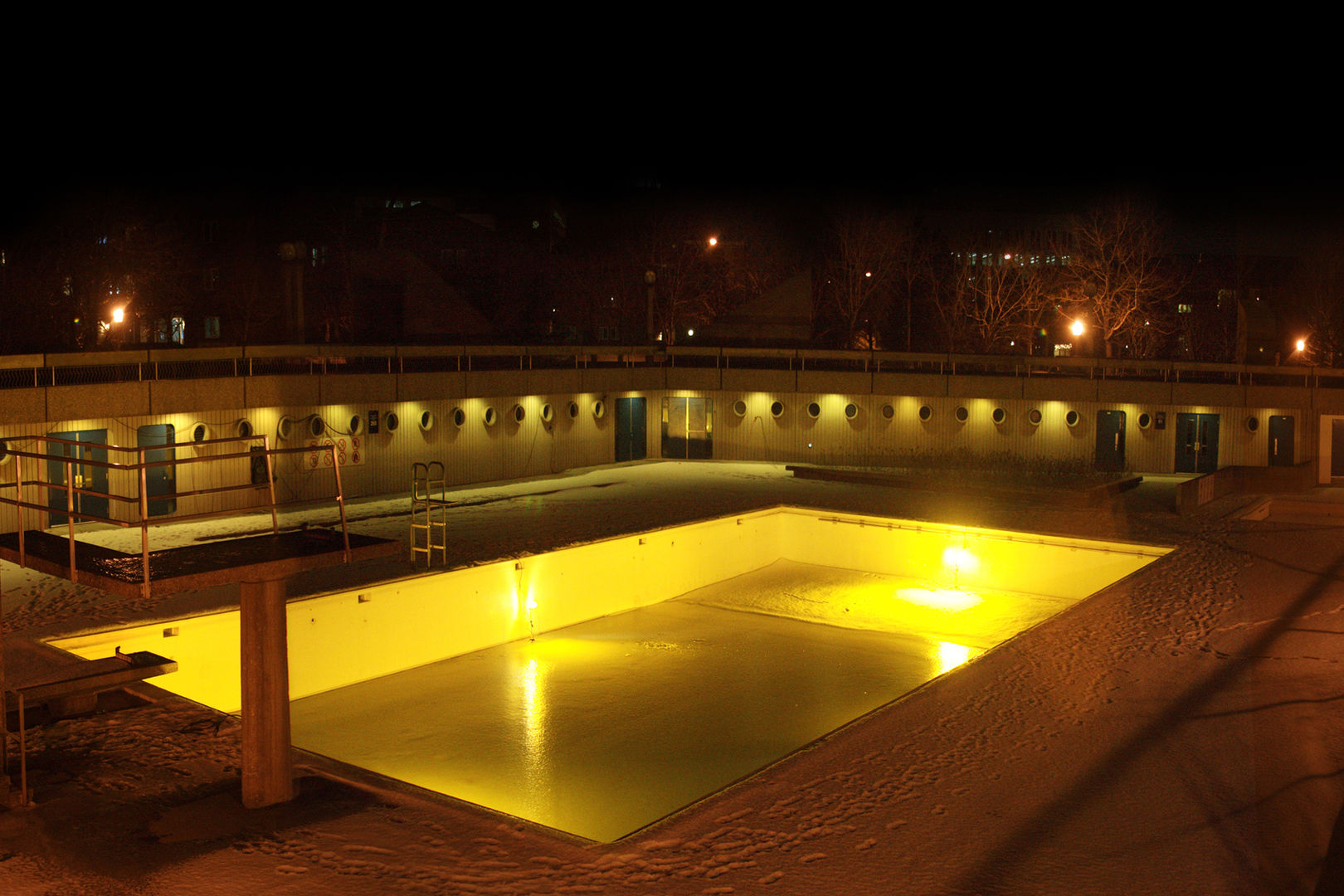LIVING MONOCHROME
La Chambre Blanche, Quebec 2009
Site-specific durational light installation, St. Roch outdoor pool Quebec
In-situ and interrelated works acting as one overarching conceptual drawing work, circulating between water bodies - Saint-Laurent Rivers, Montmorency Falls, La Piscine St-Roch (Outdoor Swimming Pool), the gallery and studio as a water body.
Towards the end of November, on the banks of the Saint Charles River, a yellow, luminous halo emanates from the Saint-Roch outdoor swimming pool. From up high on the premonitory, the curious may have wondered about the origins of this unusual phenomenon, produced by an installation created by the Australian artist James Geurts, during his residency at La Chambre Blanche artist-run centre.
'In the main pool, three luminous yellow sources, placed at different points, light up a frozen rectangular interior. Over the course of a several weeks, the installation evolves with the variations in climate. The spots, which gradually become covered with snow, create unexpected sculptures and drawings in the ice through the heat that they emit. Through his placement of four lamps on the ice, James Geurts transforms the rectangular pool into a yellow, vaporous cavity, scattered with calligraphic forms. The curves and the excavations created on the surface of the carpet of snow offer a hypnotic spectacle to passersby, a sense of the sublime emerges through the luminous sculptural relief.
At the intersection of Land Art and Minimalism 1) this installation is paradigmatic of the work produced by James Geurts in Quebec; time and the ambiance of luminosity intervene, playing a pivotal role in the construction of the art work. James Geurts transforms his chosen site into a moving body, permeable to variations in time and climate.'
Excerpts from - Reflections of Quebec. Review by Anne-Lise Griffon, Inter Actuel 103, Magazine, Edition Interventions Quebec 2009
1) The installation displayed some of the characteristics of Andy Goldsworthy's work with water and ice. The use of modulating light sources, revealing aspects of space, strongly evokes the work of Dan Flavin. For example, The Diagonal of Personal Ecstasy (The Diagonal of May 25, 1963), a work consisting of a single yellow neon attached to the wall of his studio at a 45- degree angle, prompting a re-reading of the space.
